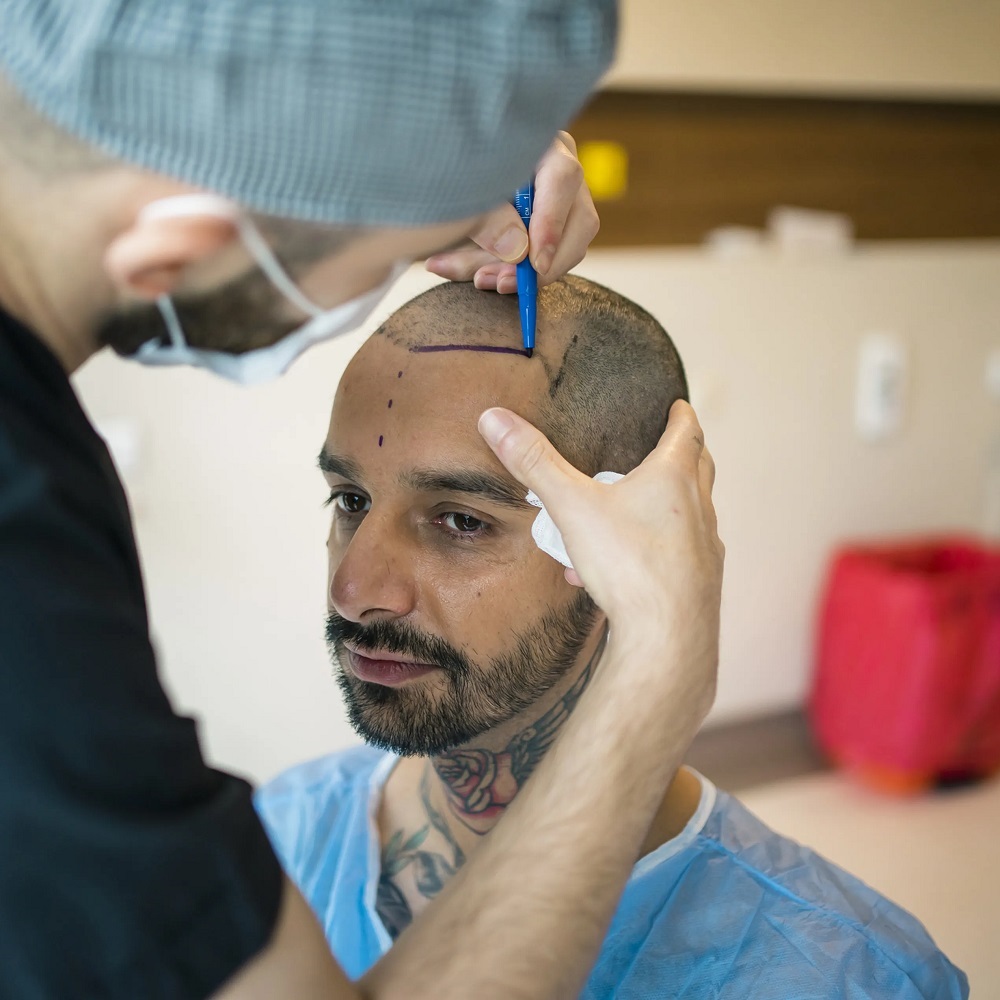Hair transplant is a transformative procedure for those struggling with hair loss or thinning. While the long-term results can significantly boost one’s confidence and appearance, it’s equally important to understand what to expect in the immediate aftermath of the surgery. Many patients feel anxious about how they’ll look right after the procedure, especially if they plan to return to work or social activities soon.
Initial Appearance Post-Procedure
Once your hair transplant is completed, the first thing you’ll notice is some visible changes to your scalp. The donor area—typically the back or sides of the head where healthy hair follicles are harvested—might be slightly swollen and red. If Follicular Unit Extraction (FUE) is used, you may see tiny dot-like scabs. If Follicular Unit Transplantation (FUT) is performed, there will be a linear scar covered by surrounding hair.
The recipient area, where the new follicles are implanted, will also show signs of the procedure. It may appear red, swollen, and covered with tiny crusts or scabs where the grafts were inserted. This is completely normal and part of the natural healing process. Many individuals opting for a Hair Transplant in Islamabad are briefed in advance to expect these temporary changes.
Swelling and Redness
Swelling on the forehead and around the eyes is common in the first two to three days after the transplant. This is a side effect of the saline solution used during the procedure and typically subsides on its own. Redness, especially in fair-skinned individuals, may persist a bit longer but gradually fades over the first week. Patients are advised to keep their head elevated while sleeping to reduce swelling and promote healing.
Crusting and Scabbing
Scabs will start to form around the transplanted hair follicles within the first couple of days. These crusts are made of dried blood and fluid and help protect the new grafts as they settle into their new position. It is crucial not to pick or scratch these scabs. They usually begin to flake off naturally within a week to ten days. By this time, most of the visible signs of the transplant start to fade, and the scalp begins to look more normal.
Shedding of Transplanted Hair
Around two to three weeks post-surgery, most of the transplanted hairs will shed in a process known as “shock loss.” This can be alarming to some patients, but it is a normal and expected part of the growth cycle. It doesn’t mean the procedure has failed. The hair follicles remain intact under the scalp and will begin to grow new hair in a few months.
Temporary Visibility of the Procedure
Immediately after a hair transplant, the results are not aesthetically pleasing to everyone. The scabs, redness, and swelling can make the scalp look irritated. For this reason, some people choose to take a few days off work or wear a loose-fitting hat once the doctor permits it. However, it’s important to avoid any headwear that applies pressure on the treated area.
When Will You Start to Look Normal?
By the end of the second week, most patients look fairly normal. Redness will have faded, scabs will have fallen off, and the swelling should be gone. However, the final results take time. Hair typically starts to grow in around three to four months, and full density is usually achieved between 9 to 12 months post-surgery.
Post-Procedure Care and Recovery Timeline
Your immediate post-transplant appearance is just the beginning. Recovery is a gradual process, and how you care for your scalp during this phase will impact how quickly things return to normal. Most clinics provide detailed aftercare instructions, which typically include gentle washing with a mild shampoo, avoiding direct sunlight, and not engaging in strenuous physical activities for at least a week.
One of the most important aspects is keeping the scalp clean and dry, especially in the first 48 to 72 hours. This helps reduce the risk of infection and supports proper healing. You’ll also be advised to avoid scratching or rubbing the scalp, even if there’s some itching, which is a common part of the healing process.
Social Visibility and Returning to Normal Life
From a social standpoint, many patients feel self-conscious about being seen with redness, swelling, or scabbing. If you’re someone who interacts regularly in a professional or social setting, it might be a good idea to plan a few days off work or limit public appearances. Most patients look quite presentable within 7 to 10 days after the transplant, especially if they follow the post-operative guidelines closely.
By the second week, scabs will naturally fall off, and the redness will subside significantly. At this stage, unless someone knows what to look for, it may be difficult for others to even tell you had anything done.
Long-Term Outlook
Although the initial signs fade within days to weeks, the journey to full hair growth is longer. After the initial shedding phase (which is normal), new hair starts to appear within 3 to 4 months. However, the real transformation becomes noticeable between 6 to 12 months post-transplant.
Patience is essential. You may go through phases where growth appears patchy or slower than expected. But with time and care, most individuals achieve a natural, fuller appearance that blends seamlessly with their existing hair.
In short, the way you look immediately after the transplant is temporary and manageable—and well worth the lasting results that follow.
Conclusion
Understanding what to expect immediately after a hair transplant helps reduce anxiety and promotes proper aftercare. Though the initial appearance might seem concerning, these changes are temporary and part of the healing journey. With proper care and patience, you’ll be on your way to enjoying the lasting results of your procedure. For those considering the treatment, Royal Cosmetic Surgery PK offers expert consultations and customized care to help you achieve the hair restoration results you desire.
